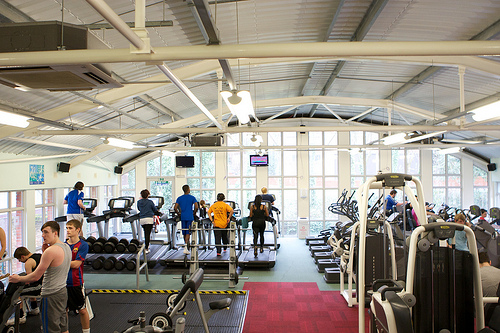
Don't Spend All Day Waiting In Line; Work Out When the Gym's Empty
If everyone who has a gym membership turned up every day, there'd be no room to move. Gyms' business plans depend on 'guilt' memberships and the place being mostly empty. At certain times of the day, though, it can look like everyone in the country with a gym membership has come to your gym. You make it inside and there's a queue out the door for everything. What's to do? Try to figure out when your gym is empty, and go then. Check out the different areas and build that knowledge into your training plan. If the machines are always busy on a Thursday and the weight room is rammed on Tuesdays, do machines on Tuesday and weights on Thursday.
- Important notification about information and brand names used in this slideshow!
- Photo courtesy of Nottingham Trent University by Flickr : www.flickr.com/photos/nottinghamtrentuni/7655585540/
- www.webmd.com/fitness-exercise/features/9-common-gym-mistakes
- http://www.mensfitness.com/training/pro-tips/10-stupid-mistakes-to-avoid-in-the-gym
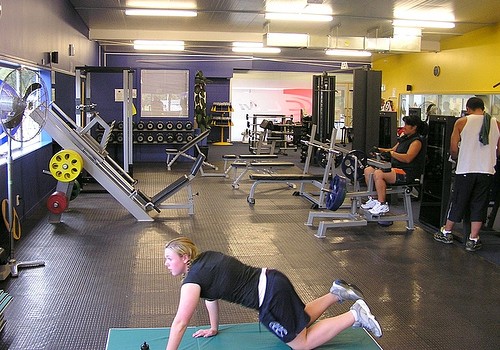
Forgetting To Warm Up Before Training Is a Big No-No
Jumping in to training isn't such a good idea. Some things, like kettlebells and skipping, are well suited to being their own warmup. Heavy squats aren't. Try to spend about five or ten minutes doing a systemic, general warmup, ideally one that involves some joint mobilization and some muscle activation while simultaneously elevating the heart rate and getting some lymph and synovial fluids circulating, protecting your joints. For people who are already fairly fit, light calisthenics are a good fit. Others might find a mix of jogging on the spot and light stretching helps. Whatever you do make sure it leaves you warm - a warm up should actually make your body warmer.
- Important notification about information and brand names used in this slideshow!
- Photo courtesy of Keith Davenport by Flickr : www.flickr.com/photos/sirwiseowl/189691615/
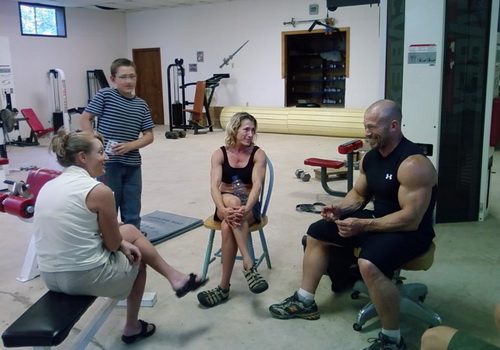
Doing Too Many Sets of Facebook In Between Training
We've all seen these people - and at one time or another, we've all been the guy with the phone, or the girl with her friends, or Mr. Selfie... It's better to train than to play around. Some training structures require long periods of rest - but that should be rest, not texting. Most don't. You're not at the gym to strengthen your thumbs. Facebook won't wither without you. Leave your phone in the locker room, and keep chatting to a minimum unless it's going somewhere useful.
- Important notification about information and brand names used in this slideshow!
- Photo courtesy of Bomb_Squad_Racing by Photobucket : media.photobucket.com/user/Bomb_Squad_Racing/media/Cabin%20Aug09/0731091758-01.jpg.html?filters[term]=gym%20talking&filters[primary]=images&filters[secondary]=videos&sort=1&o=1
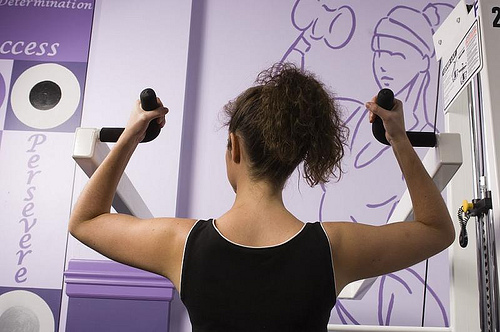
Ticking Along In The Slow Lane - You Need Intesity
Turning over in neutral isn't a good way to spend time. Not everything you do has to be panic attack inducing, special forces tough super intense stuff, but you should be training with enough intensity to provide some genuine challenge a couple of times a week. The main thing is to refer to your training plan. If you're trying to develop power, you might need two or three minutes' rest between sets. If that's the case, make sure you get it; don't rush. If you're supposed to be doing HIIT, don't stop for a breather!
- Important notification about information and brand names used in this slideshow!
- Photo courtesy of Contours Express by Flickr : www.flickr.com/photos/29123818@N05/2722742076/
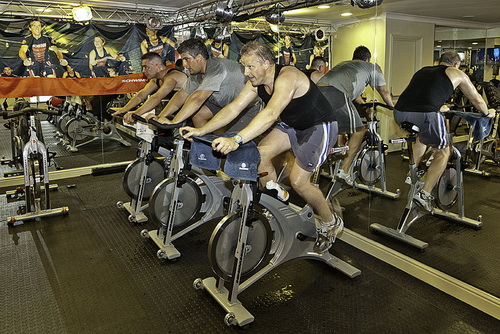
Doing Your Cardio Before You Lift, Or At The Wrong Time
Cardio is best done toward the end of your training session. Low and moderate intensity cardio is the least neurologically demanding part of your training. So it should be done at the end, where it won't interfere in power or strength training. A clear breakdown would be something like: Power - Speed - Speed Strength - Strength - Strength Endurance - Endurance - Intense Cardio - Low Intensity cardio. There are some exceptions to this but it's a good rule of thumb. Five or 10 minutes' cardio to warm up effectively isn't a bad idea; thirty minutes on a treadmill at the beginning of your session is.
- Important notification about information and brand names used in this slideshow!
- Photo courtesy of Antony McCallum by Wikimedia Commons : en.wikipedia.org/wiki/File:Spinning-bike.jpg
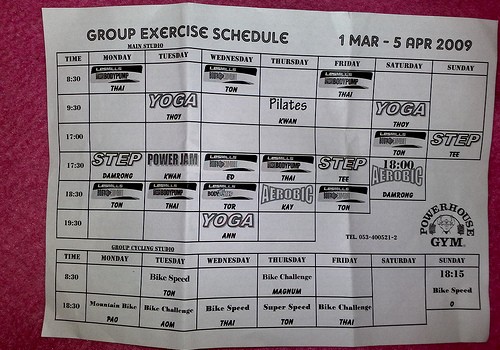
Leaving Your Training Schedule At Home Or Forgetting To Write One
Going to the gym without a training schedule is like going shopping without a list. You'll come home with a bag full of beers, chips and burgers - no soap, no cleaning products... it's the same. Train without a plan and you'll wind up doing whatever vanity exercises you kind of feel like, then a few minutes on a treadmill... a well thought out training plan should leave you some room to move but you should definitely have one. Try to start with what your goal is and progress from there - if you have no idea where you want to go, the best map in the world is no use.
- Important notification about information and brand names used in this slideshow!
- Photo courtesy of Jeff McNeill by Flickr : www.flickr.com/photos/jeffmcneill/3348331579/

Poor Management of Rest Periods - This Should Be Planned Out
Rest periods are one of the most important things to control in training. Some training protocols require specific rest periods while others involve more 'instinctual' rest periods. Typical weight training protocols won't involve less than a minute's rest or more than five minutes' rest. Don't let your rest periods get away from you, though. Training without due attention to rest periods will definitely mess up your efforts at hypertrophy, and it won't do wonders for your cardio either. Lay out a plan, and stick to it, for the best results - and try not to take too long wandering between stations.
- Important notification about information and brand names used in this slideshow!
- Photo courtesy of Ivan Fourie by Flickr : www.flickr.com/photos/shodan/195529646/
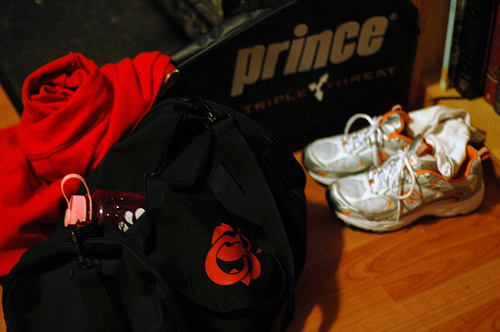
Forgetting Your Water Bottle, Gym Shoes, Bag, Towel...
Forgetting the gear you need to train effectively can be a demoralising experience. Some gyms won't let you train barefoot - crazy but true - while, though most will sell you a water bottle, if you get there and realize you've left your gym bag at home it can feel like a wasted journey. The solution is to do a checklist before you leave the house. Keep the checklist in your training journal. Ideally, get a training buddy who can chat with you over the phone, social networking or texting and remind each other before you leave the house. It's easier to police someone else than yourself, so do it for each other.
- Important notification about information and brand names used in this slideshow!
- Photo courtesy of stacya by Flickr : www.flickr.com/photos/stacya/393272932/

Mixing Balance Equipment and Strength Training Isn't Smart
As a rule, the tales that balance equipment make strength training are simply untrue. Personal trainers talk up the muscle activating effects of the Bosu ball, but there's no study that takes their side. Gym balls, Bosu balls and all the other paraphenalia of balance training doesn't belong in strength training - though I can't say that without an honorable mention for the gymnastic rings and other suspension systems that will give you the upper body strength workout of your life. The aim of strength training should be to move the most weight, not to do it while wobbling on top of a Swiss ball. Do your balance training separately.
- Important notification about information and brand names used in this slideshow!
- Photo courtesy of Keith Allison by Flickr : www.flickr.com/photos/keithallison/3838777718/
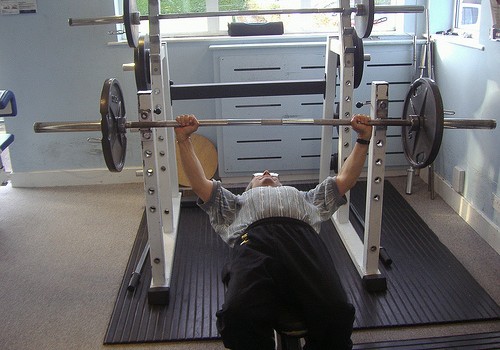
Bad Technique Will Stop You Sooner Or Later - See A Professional Before You Get Injured
Poor technique - poor movement quality - is an injury. Every time you train with poor movement quality, you're working on your injury. Pretty soon, you'll have big, beautiful injuries all over the place. The solution is to talk to a professional with a good reputation among other pros and among their clients and discuss your goals, as well as the best way to reach them. Not every fitness professional will give you the same advice, and yes, it can be expensive. But it's a lot cheaper to avoid an injury now than to pay out for treatment when you get one.
- Important notification about information and brand names used in this slideshow!
- Photo courtesy of David Howard by Flickr : www.flickr.com/photos/satguru/2661215221/


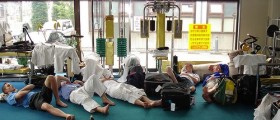



_f_280x120.jpg)


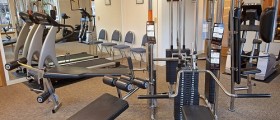


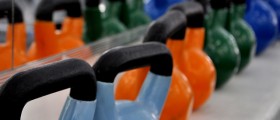

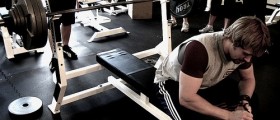



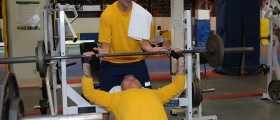






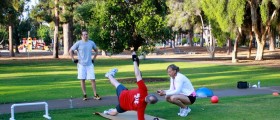
Your thoughts on this
Loading...